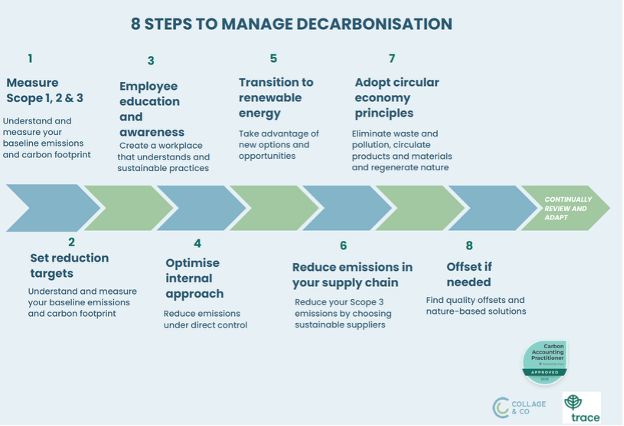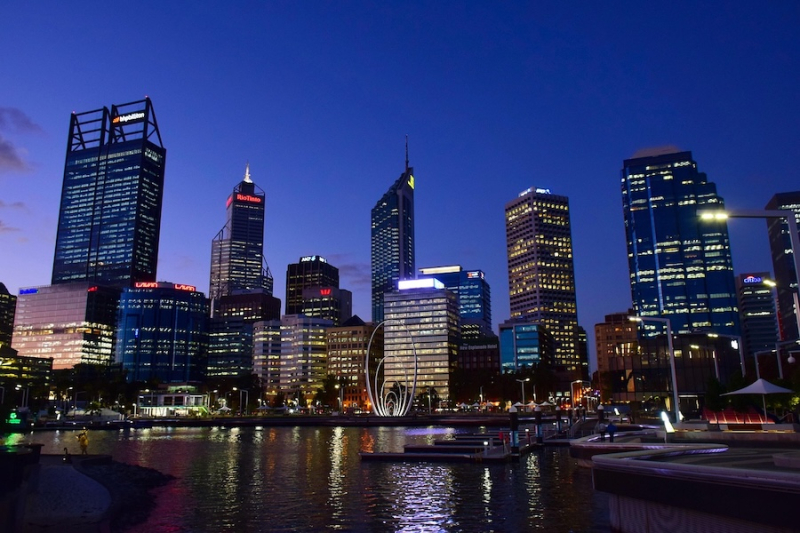You’ve measured your carbon footprint, now what? Here’s how to transform data into action and competitive advantage.
Congratulations! You’ve calculated your carbon footprint.
You have a number (maybe several) and you’re staring at a spreadsheet wondering, “What now?”
This is where many businesses stall, but it’s where the real opportunity begins.
Your carbon footprint isn’t just an environmental metric; it’s a business intelligence tool that can drive cost savings, operational improvements, and competitive positioning.
Let’s explore how to unlock that value.
Turning Data Into Action
Not all emissions are created equal.
Some are expensive to reduce, others are surprisingly easy. Some you control directly, while others require collaboration with suppliers or employees.
Start by creating a simple priority matrix.
High Impact, High Control
These are your quick wins.
Maybe you discovered that heating accounts for 30 per cent of your emissions, and you rent an older building.
Upgrading to a smart thermostat or improving insulation could deliver immediate results.
High Impact, Low Control
These require strategic thinking.
If employee commuting is a major source of emissions, you can’t control their transport choices, however, you CAN influence them through flexible work arrangements, transit subsidies, or carpooling programs.
Low Impact, High Control
Don’t ignore these entirely.
Easy changes like switching to LED lighting or choosing renewable energy suppliers can build momentum and demonstrate commitment.
Low Impact, Low Control
These are your last priority unless they’re extremely easy to address.
The Business Case for Carbon Reduction
Every carbon reduction strategy should also be a business improvement strategy. Here’s how to think about it:
Energy Efficiency = Cost Reduction
That heating system, which consumes 30% of your emissions, is also consuming 30% of your energy budget.
Efficiency improvements pay for themselves through reduced utility bills.
Travel Optimisation = Time and Money Savings
Reducing business travel doesn’t just cut emissions, it saves travel expenses and gives employees more productive time.
For example, video conferencing technology often pays for itself in months.
Supply Chain Optimisation = Risk Reduction
Engaging with suppliers about their carbon footprint often reveals opportunities for cost savings, quality improvements, and supply chain resilience.
The Power of Carbon Intensity
Here’s a metric that many businesses overlook: carbon intensity.
This measures your emissions per dollar of revenue.
Why does this matter?
If your business is growing, your absolute emissions might increase even if you’re becoming more efficient.
Carbon intensity helps you understand whether your growth is “clean” growth. It’s also a metric that investors and customers increasingly care about.
Track both your absolute carbon footprint and your carbon intensity. The story they tell together is more valuable than either one alone.
Smart Strategies for Different Business Types
Service-based businesses
Focus on travel, office energy, and remote work policies. Many service businesses can achieve 20-30 per cent reductions simply by optimising travel and embracing hybrid work models.
Retail businesses
Supply chain emissions often dominate. Engage with suppliers, optimise inventory to reduce waste, and consider local sourcing where practical.
Manufacturing
Process optimisation usually offers the biggest opportunities. Energy efficiency, waste reduction, and raw material optimisation can deliver both environmental and financial benefits.
The Offsetting Dilemma: A Balanced Perspective
Should you offset your remaining emissions?
The answer is nuanced.
High-quality environmental projects deserve support, but be wary of using offsets as a substitute for reducing your own emissions.
Consider supporting environmental projects because they’re worthwhile, not because they mathematically “cancel out” your emissions. Tree planting, renewable energy projects, and conservation efforts create real value. Just don’t let them become an excuse for business-as-usual.
Setting Targets That Matter
Ambitious targets motivate action, but unrealistic targets create frustration.
Consider:
- Short-term targets (1-2 years) focus on quick wins and process improvements. A 15-20% reduction is often achievable through efficiency measures.
- Medium-term targets (3-5 years) allow time for larger investments, such as equipment upgrades or supply chain changes. Aim for 30-50% reductions from your baseline.
- Long-term vision (10+ years) is where net-zero thinking comes in. What would your business look like if it operated with 90-95 per cent fewer emissions?
The Net-zero Conversation
Net zero isn’t just a buzzword; it’s fast becoming a business requirement.
Absolute net zero means dramatic emission reductions first, with offsetting only for the truly unavoidable remainder.
The Science-Based Targets Initiative provides frameworks for setting credible net-zero targets.
Even if formal certification isn’t necessary for your business, the methodology offers valuable guidance for serious climate action.
Building Competitive Advantage
Early movers in carbon management are creating competitive advantages:
- Procurement Opportunities. Government contracts increasingly require carbon reporting. Being ready positions you ahead of your competitors.
- Customer Loyalty. Consumers and business customers increasingly factor environmental performance into purchasing decisions.
- Talent Attraction. Employees, especially younger ones, want to work for environmentally and socially responsible companies.
- Cost Resilience. Energy-efficient operations are more resilient to energy price volatility.
The Continuous Journey
Carbon measurement and management isn’t a one-off project; it’s an ongoing process.
Update your footprint annually, track your progress, and celebrate improvements while staying curious about new opportunities.
The businesses that thrive in the coming decades will be those that see environmental responsibility not as a compliance burden, but as a source of innovation, efficiency, and competitive advantage.
Your carbon footprint data is the beginning of this journey.
Use it wisely, and it will guide you towards a more sustainable, efficient, and successful business future.
Turning Insight Into Impact
You’ve done the hard part. Now it’s time to turn insight into impact.
Your carbon footprint data is more than just numbers on a page; it’s a roadmap to a smarter, leaner, more competitive business.
At Collage & Co, we help you translate data into meaningful action – from identifying quick wins to setting long-term targets that align with growth and sustainability.
Whether you’re reducing costs, future-proofing your operations, or building customer and investor confidence, now is the time to act. Start using your carbon data to drive real change and set your business apart in a low-carbon economy.
Get in touch to learn about how we can support you.
Read More
How Understanding Your Carbon Footprint Could Save Your Business Money
Your Small Business Guide to Measuring Your Carbon Footprint: A Step-by-Step Roadmap
Discover all you need to know about ESG







